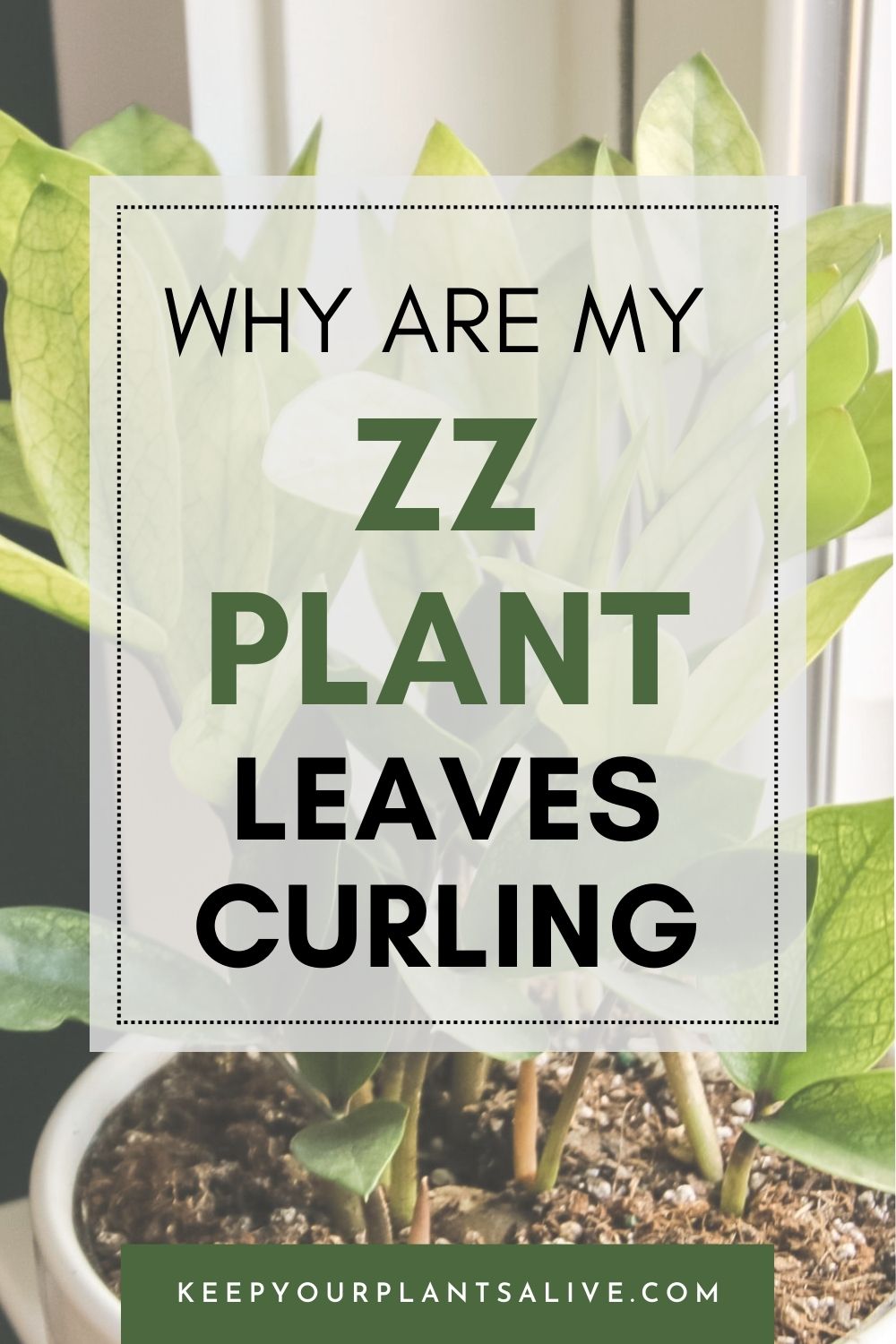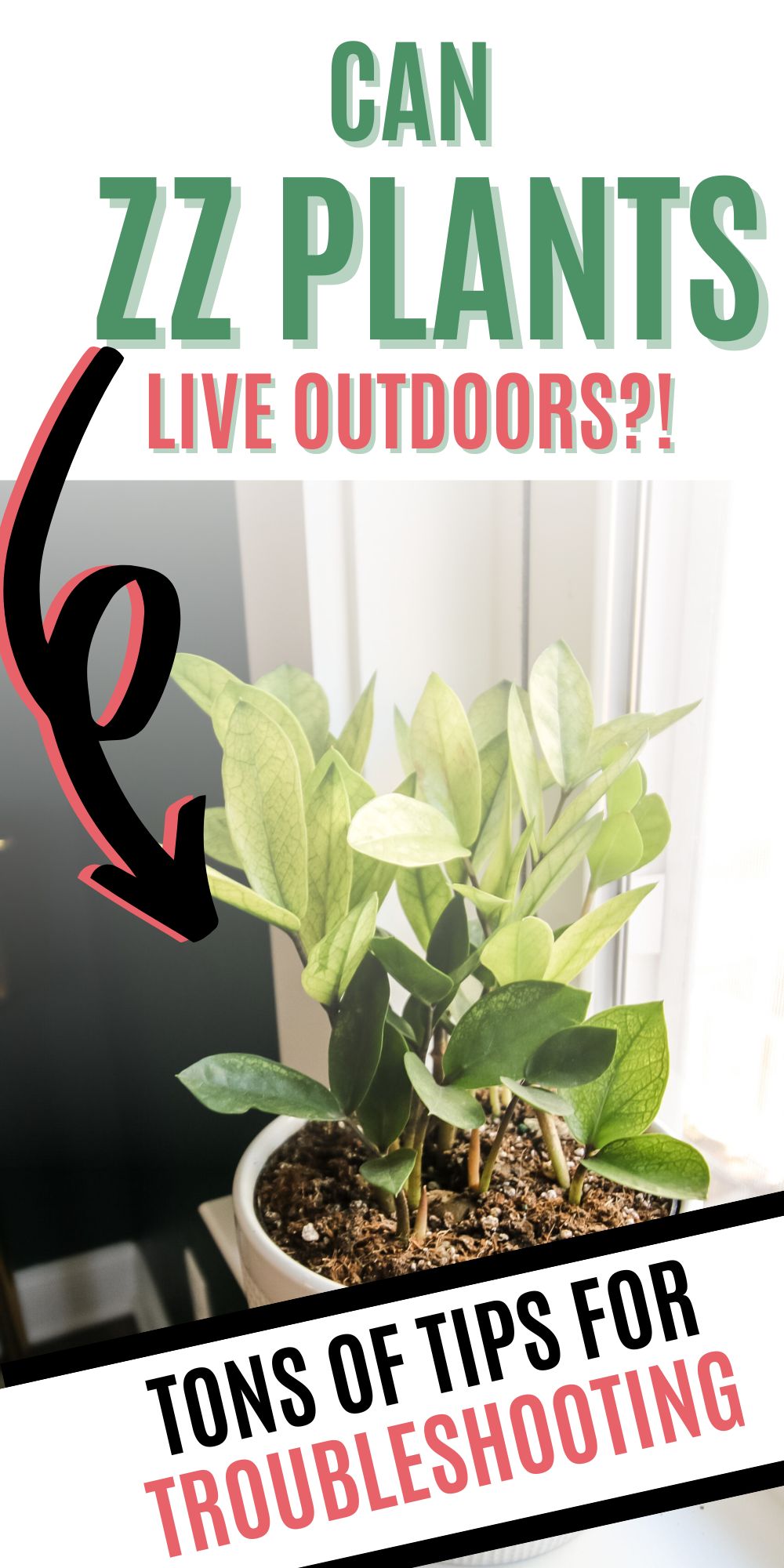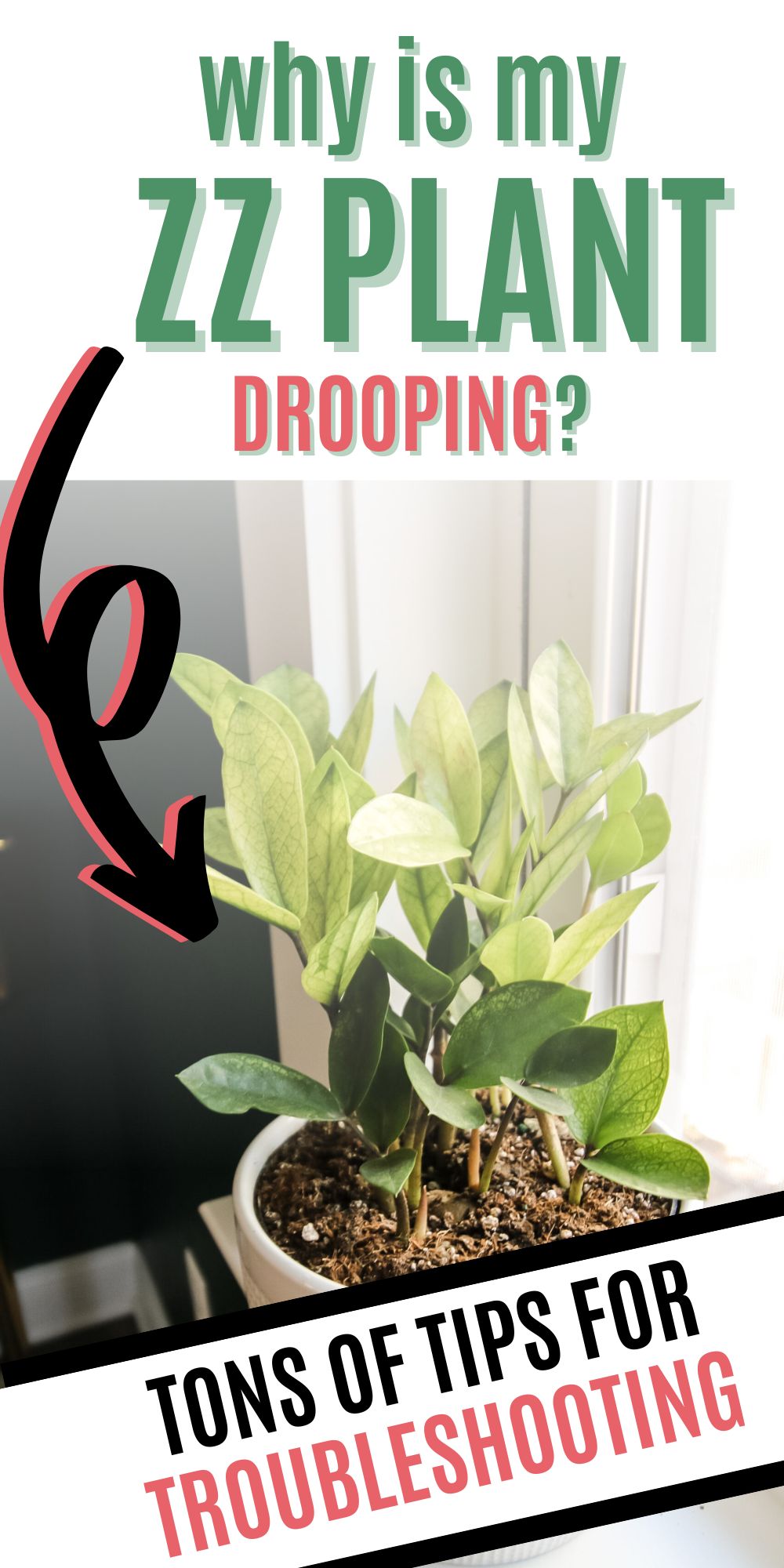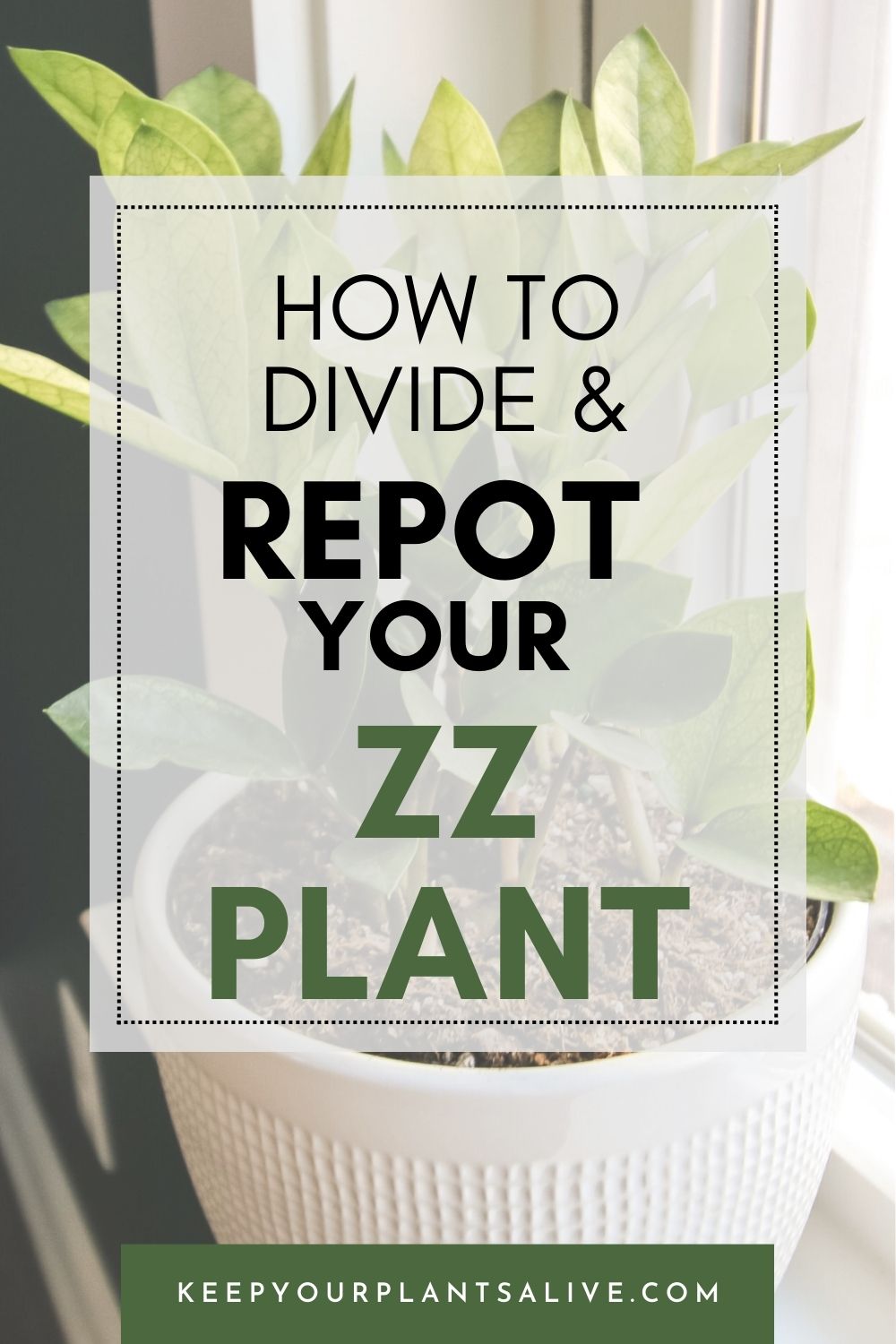Struggling with a leaning ZZ plant? Find out the best ZZ plant supports to keep your plant upright and thriving.
The Zamioculcas zamiifolia, simply known as the “ZZ plant”, is a real gem for your home with its shiny leaves and air-cleaning abilities.
While ZZ plants naturally grow upwards, sometimes these plants start leaning or struggle to hold themselves up as they grow taller.
But don't worry. I've got some great tips and methods to support your ZZ plant standing tall and looking good.

Best Types of ZZ Plant Supports
ZZ plants are fast-growing plants, and some of them can grow up to several inches per season.
For that reason, keeping the plant upright is quite necessary to maintain its stability and aesthetics.
In this section, we’ll take a closer look at the best options for supporting ZZ plants, including their advantages and how each one works.

1. Bamboo Stakes
Stakes are among the most popular techniques to support ZZ plants.
These sturdy stalks are usually made from bamboo, which is durable enough to support the weight of ZZ plants as they grow.
Bamboo is also naturally rot-resistant, so you don’t have to worry about it breaking down in moist soil.
You can also cut the stalks to desired lengths with relative ease, allowing you to shape them however you like.
Bamboo stakes also add a touch of aesthetic appeal without overpowering the beauty of your houseplant.
Additionally, they’re eco-friendly, highly affordable, and remarkably easy to apply. So, here’s how to use them to support your ZZ plant:
- Start by cutting the bamboo sticks so that they’re around the same height as the ZZ plant.
- Insert the bamboo sticks into the soil, and try to avoid hitting rhizomes and roots as you go (but don’t worry if you accidentally hit one, as ZZ plants have a large root network and will recover quickly)
- Check that you’re not blocking any drainage holes, and adjust the stalks if necessary.
- Once you make sure the stakes are secured in place, use garden twine to secure the plant to the bamboo stakes, but don’t tie it too tight.
As the plant grows, you may need to adjust the ties or add additional stakes, so make sure that you check the plant accordingly.

2. Moss Poles
While moss poles are more common among Monstera and other houseplants that produce aerial roots, you can still use them to support a ZZ plant if you like their aesthetic appeal.
One unique advantage of using moss poles is that they’re capable of holding a lot of moisture, allowing them to create a humid environment for the tropical plant.
To use the moss pole, you need to use one that is similar in height to your plant.
Like bamboo stakes, you’ll need to attach the plant to the pole using garden twine, as ZZ plants don’t produce aerial roots to attach themselves naturally.
Keep in mind that moss poles are relatively thick, so you can also use coir poles if you’re looking for a slimmer alternative.

3. Wire Cage
Another reliable solution to support your ZZ plant is using wire cages.
These come in a wide range of designs and styles to suit your preferences, ranging from standard lattices to obelisks and trellises.
Wire cages are also made from a wide variety of materials, including metal, bamboo, wood, and plastic.
The choice here mainly depends on your personal preference and the size of your plant.
However, you should typically avoid plastic cages because they can leak microplastics into the soil, which can harm your plant in the long run.
Additional Tips to Keep Your ZZ Upright and Fuller
Keeping your ZZ supported and healthy isn’t only about using the right support for the plant.
There are other techniques and tips that can greatly improve the quality of your plant and increase its foliage density while growing more upright.
Let’s have a quick look at them:
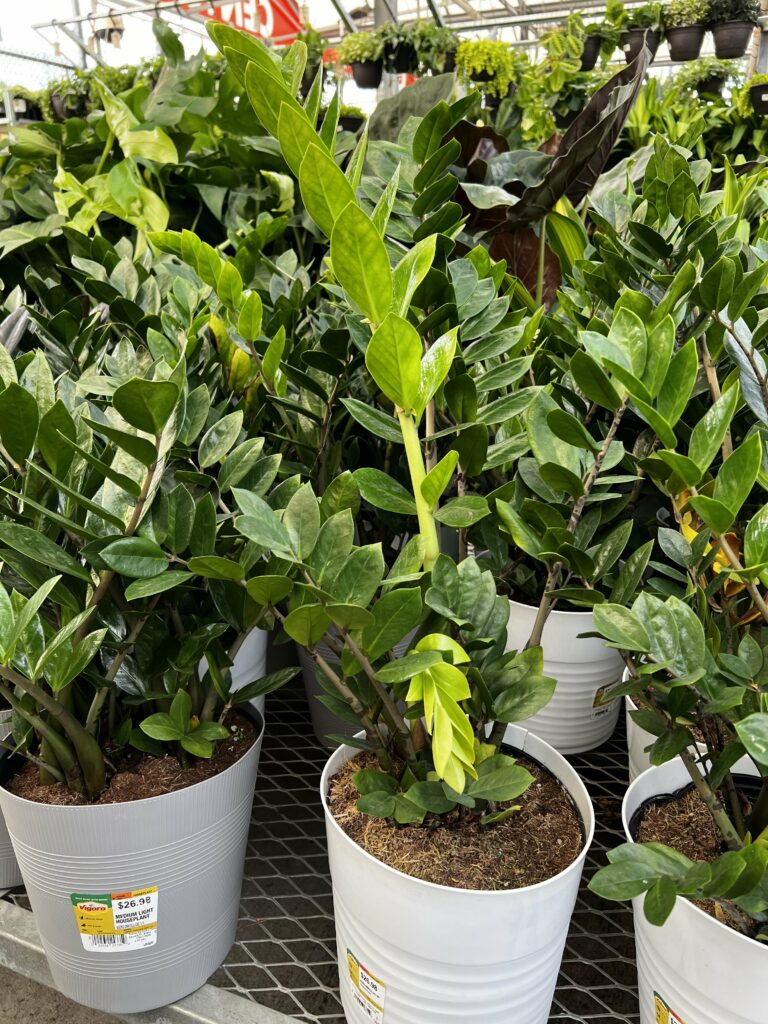
Rotate Your ZZ Plant
One of the main reasons why your ZZ plant is growing sideways is that the plant is actively heading toward the light source.
To avoid this effect, you need to rotate the plant’s pot a quarter turn every 5 to 7 days.
This way, each side of the plant gets an equal amount of light exposure. This also encourages the plant to grow upright instead of looking lopsided.
Keep in mind that ZZ plants prefer bright, indirect/filtered light, so avoid exposing the plant to direct sunlight, as it might scorch the leaves.
Avoid Overwatering
The most common cause for drooping stems in ZZ plants is overwatering.
This one is usually accompanied by other symptoms, such as soggy soil and plump leaves, which is also a warning sign of root rot.
Ideally, you need to allow the soil to dry out completely before watering the plant again, which can take up to a month in winter.
Repotting and Dividing
Another trick to keep the plant upright and healthy is to simply keep the plant small.
This way, the plant’s stems will remain able to support its own weight without drooping.
Dividing and repotting ZZ plants is quite easy. You simply need to remove the soil and cut the main root/stem bulk into two to three smaller pieces, then repot them again.
Before you go...
There you have it! A brief guide that walks you through all the different techniques to support ZZ plants and keep them upright.
Ideally, bamboo stakes are the most reliable technique here because it’s affordable, easy to set up, and don't affect the aesthetics of your plant.
If you’re interested in finding out tips about caring for your houseplant, don’t hesitate to download this free printable quickstart guide!
Thanks for reading!


Hey there, I'm Morgan, a houseplant enthusiast from sunny Charleston, South Carolina. Growing up surrounded by my mom's lush orchids and African violets, I discovered the magic of bringing nature indoors. Thanks to the pandemic, I delved deeper into houseplants, discovering their power to uplift moods and transform spaces. I'm here to spill all my secrets, helping you pick the perfect houseplant - and make it happy. Let's keep your plants alive, together! 😊

